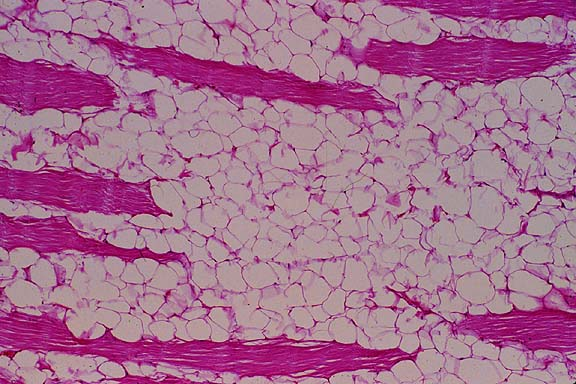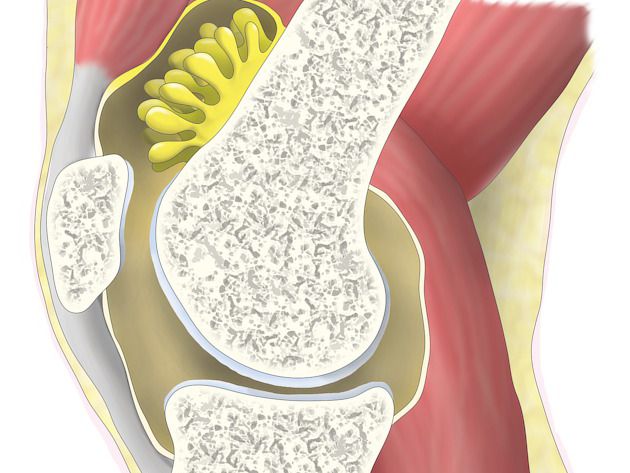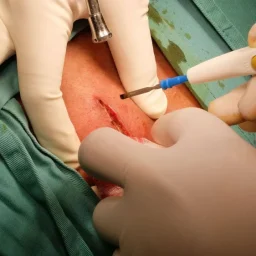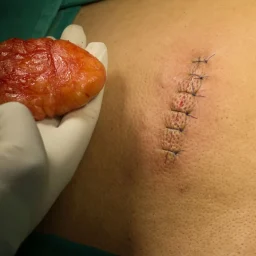
1. Understanding Lipomas: The Basics
Lipomas are typically soft, slow-growing lumps that form in the fatty tissue just beneath the skin. They are usually round or oval in shape and can range in size from a small pea to a larger mass. Most people develop lipomas in their middle-aged years, and these growths can occur anywhere on the body, but they are most commonly found on the upper back, shoulders, arms, or thighs.
While the exact cause of lipomas is still not entirely understood, they are thought to arise from genetic mutations that lead to the abnormal growth of fat cells. Lipomas are typically painless, but in some cases, they can cause discomfort if they press on nearby nerves or other tissues.
2. Lipomas vs. Liposarcomas: Key Differences
A common concern for individuals with lipomas is whether their condition could turn into cancer, particularly a type of cancer known as liposarcoma. To clarify, lipomas and liposarcomas are two distinct types of growths:

- Lipomas: These are benign (non-cancerous) fatty tumors composed of mature fat cells. Lipomas grow slowly and are often movable under the skin. They do not invade surrounding tissues or spread to other parts of the body.
- Liposarcomas: These are malignant (cancerous) tumors that also arise from fatty tissue, but they are made of immature fat cells that have the potential to grow uncontrollably. Liposarcomas tend to grow more rapidly than lipomas and can invade surrounding tissues, spread to other areas of the body, and pose a serious health threat.
The critical difference is that liposarcomas are cancerous and aggressive, while lipomas are benign and non-invasive. However, distinguishing between these two types of tumors is crucial for treatment and prognosis.
3. Can Lipomas Become Cancerous?
The short answer is: No, lipomas themselves do not turn into cancer.
Lipomas are benign tumors, and while they can grow in size over time, they do not have the ability to transform into malignant tumors like liposarcomas. However, there is a rare possibility that a lipoma could coexist with or develop into a liposarcoma. This is not a typical occurrence, and in most cases, lipomas remain benign throughout a person’s life.
4. Liposarcoma: A Rare but Possible Risk
While lipomas themselves are benign, it is important to be aware of the rare cases where a person may have both a lipoma and a liposarcoma, or where a lipoma may be misdiagnosed as a liposarcoma. The risk of a lipoma turning into a liposarcoma is extremely low, but it can be challenging to differentiate between the two without proper medical examination.
Liposarcomas typically appear in different forms based on the type of cells they are made from, such as:
- Well-differentiated liposarcomas: These are the slowest growing and may appear similar to a lipoma, but they can invade nearby tissues.
- Myxoid liposarcomas: These tend to occur in deeper tissues and are more aggressive than well-differentiated types.
- Pleomorphic liposarcomas: These are the rarest and most aggressive, composed of cells that do not resemble normal fat cells.
Because liposarcomas are malignant and can spread to other organs, early detection and differentiation from lipomas are crucial for effective treatment.
5. Risk Factors for Liposarcoma Development
Though the risk of a lipoma transforming into cancer is exceedingly rare, certain factors can increase the likelihood of a person developing a liposarcoma. These include:
- Genetics: A genetic predisposition can increase the likelihood of both lipomas and liposarcomas. For example, some inherited conditions like familial multiple lipomatosis (which causes multiple lipomas) can raise the risk of developing liposarcomas.
- Age: Liposarcomas are more commonly diagnosed in older adults, particularly those aged 50 and above.
- Radiation Exposure: Previous radiation therapy for other cancers can increase the risk of developing liposarcomas in the treated area.
- Previous Cancer History: Individuals who have had other types of cancer may be at a slightly higher risk of developing liposarcomas.
6. Signs and Symptoms of Liposarcomas
In rare cases, a lipoma may display characteristics that raise concern, and it may require further medical evaluation to rule out liposarcoma. Here are some warning signs that might suggest the presence of a liposarcoma rather than a simple lipoma:

- Rapid growth: Liposarcomas tend to grow much faster than lipomas, which grow slowly over the years.
- Pain or tenderness: Lipomas are typically painless, but liposarcomas can cause discomfort, particularly if they compress nearby nerves or tissues.
- Firmness: A lipoma is usually soft and movable under the skin. If the lump becomes hard or immovable, it could be indicative of a more serious condition like liposarcoma.
- Size: Lipomas are typically less than 5 cm in size, although they can occasionally grow larger. Liposarcomas can be much larger and may cause noticeable changes in the surrounding area.
If any of these symptoms are present, it’s important to seek a medical evaluation to ensure an accurate diagnosis.
7. Diagnosis: How to Tell the Difference Between Lipomas and Liposarcomas
To distinguish between lipomas and liposarcomas, a healthcare professional will typically use the following diagnostic tools:
- Physical examination: A thorough examination of the lump, including its size, shape, and mobility.
- Imaging tests: Techniques such as ultrasound, CT scans, or MRI scans can help to assess the internal characteristics of the lump, providing more information about its structure and whether it has any malignant features.
- Biopsy: If there is concern that the tumor may be cancerous, a biopsy may be performed. This involves taking a small sample of the tissue and examining it under a microscope to check for cancer cells.
8. Treatment Options for Lipomas and Liposarcomas
For lipomas, treatment is usually unnecessary unless the growth causes pain, discomfort, or aesthetic concerns. If removal is desired, lipomas can be excised surgically, and the procedure is typically straightforward with minimal risks. In some cases, liposuction or steroid injections may be used to reduce the size of the lipoma.
For liposarcomas, treatment is more complex and typically involves a combination of surgery, radiation therapy, and possibly chemotherapy. The prognosis for liposarcomas depends on the type, size, and stage of the cancer, and early detection is critical for better outcomes.
The Risk of Lipomas Becoming Cancerous
In summary, the risk of a lipoma becoming cancerous is extremely low. Lipomas are benign fatty tumors that do not have the ability to turn into cancer. However, in rare cases, they may coexist with or be misdiagnosed as liposarcomas. Recognizing the key differences between these two types of growths is essential for proper treatment and diagnosis.
If you have a lipoma or multiple lipomas and are concerned about any changes in the size, texture, or symptoms of these growths, it is important to seek medical advice. Regular monitoring and early intervention can ensure that any potential issues are addressed before they become serious.



